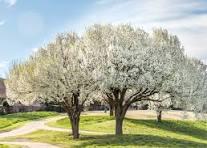|
FVGC - April Program: Work Smarter, Not Harder, with your Home Gardening Nelsa Cox, horticulturist and former owner of The Garden Hut, will be sharing tips and tricks of the trade for all of your gardening questions. She'll be covering the broad spectrum of home gardening: Are considering growing herbs in the ground? Raised Beds? or working on Container gardening? Are you focused on adding more pollinators? Nelsa will share her best practices from 39 years of gardening experience. Always a delightful speaker, Nelsa will share stories and info from her experience in growing in our gardening zone. If you are new to the Triangle and are working on your gardens this Spring, this is a presentation you won't want to miss!! |
The meeting will be held on Thursday, April 18th at the F-V Woman's Club Clubhouse, 602 N. Ennis St.
The event starts at 6:00 pm, with the presentation starting at 6:30 pm.
We'll then have a short business meeting. If you'd like to attend, please email us at [email protected]
_______________________________________________________________
The mission of the Fuquay-Varina Garden Club in North Carolina is to encourage interest in the art of gardening, garden design, flower arranging and horticulture while improving the environment through beautification, protection and conservation. We meet the third Thursday of the month January-May & September-December. General meetings are held at The Fuquay Varina Woman's Club Clubhouse located at 602 N. Ennis Street. Join us at 6:30 PM for a guest speaker followed by a business meeting. The first two meetings are complimentary. Want to know more? Read ABOUT US, contact us at [email protected], &/or Like us on Facebook!
FVGC Scholarship Application Deadline Approaching
The deadline for Fuquay-Varina and Willow Spring High School students to apply for the FVGC scholarships is 1 May 2024. Please go to the Scholarship tab for more information and the application form.
They Are Pretty In March - And Pretty Invasive
Time To Replace The Bradford Pear

It is almost time for the Bradford Pears that line our streets to bloom as another reminding that Spring has arrived. Unfortunately, Bradford Pear, besides splitting in half with the slightest breeze, is an invasive species that the state of North Carolina is trying to eliminate. Use the link below of tree service companies that are participating in the state effort by offering a 15% discount to remove these trees.
http://www.treebountync.com/removal-discounts.html
Bradford Pear Facts
Bradford pear trees are not native to the United States. They were brought to the US from China in the early 20th century. By 1950, the Bradford pear was widely planted throughout much of the country. They however can escape into our forests and outcompete native species.
Ever see Bradford pear tree limbs in peoples' yards after a storm? These trees readily break during storms, creating an annoying mess for homeowners following wind, snow, or ice.
The tree might have pretty flowers, but many people complain that the flowers have a scent similar to rotting fish.
Are you looking for garden opportunities? Check out Triangle Gardener’s Event Calendar where you will find some free events or a plethora of classes working with an expert for your unique desires.
Do you want an updated "To Do" list as Spring is here? Go to the following link for update from the NCSU Cooperative Extension. https://growingsmallfarms.ces.ncsu.edu/growingsmallfarms-spring-chores-in-the-pollinator-garden/
|
Do you like to....
* Grow flowers, plants, and/or vegetables? * Enjoy sharing your gardening experiences? * Don’t know how, but want to learn? * Enjoy guest speakers and field trips? * Want to give back to your community? Join our Garden Club! |
|

We have received a number of state awards for our many ongoing projects. In 2021 we received Judy Barnes Scholarship Award" from the GCNC. This is given to the club that gives the most scholarship funds based on a ratio per member.
In 2015 we were warded Most Outstanding Garden Tour - 1st Place Winner by The Garden Club of North Carolina. Our next Garden Tour will take place in May 17-18, 2025.
In 2015 we were warded Most Outstanding Garden Tour - 1st Place Winner by The Garden Club of North Carolina. Our next Garden Tour will take place in May 17-18, 2025.

